The Usage of Plant-Based Materials in the Mummification Process in the New Kingdom of Egypt
Student: Layan Shahrour (NHS’23)
This project explores the usage and role of plants or plant-based materials in the embalming and mummification processes. The project aims to answer: to what extent are plants used in the mummification process in the New Kingdom of Ancient Egypt? And what purpose do these plant-based materials serve in the mummification process?
After an extensive botanical and historical research, a funerary scene was created showcasing the main plant-based materials used in the New Kingdom on a model with each of the materials displayed in small jars. Furthermore, a hand-made clay sarcophagus displays the final wrapped version of the mummy, while depicting spiritual and cultural symbols on the exterior of the sarcophagus. Canopic Jars are also displayed housing their respective organs in line with the figures’ spiritual significance and protective power.
In conclusion, the materials used in the mummification process were in fact plant-based, and they were used for antibacterial and microbial purposes, specifically for cleansing, perfuming, anointing, and as packing material.
This project not only allowed for the exploration of the role of plants in the mummification process, but also as a way to remember the history and culture of New Kingdom Egyptians and the religious influence/beliefs that played a role in the process and the materials used. Furthermore, in line with the discussions of toxins in the Introduction to Medical Humanities course, a greater understanding of the progression of toxins and technology in relation to medicine over time was achieved.
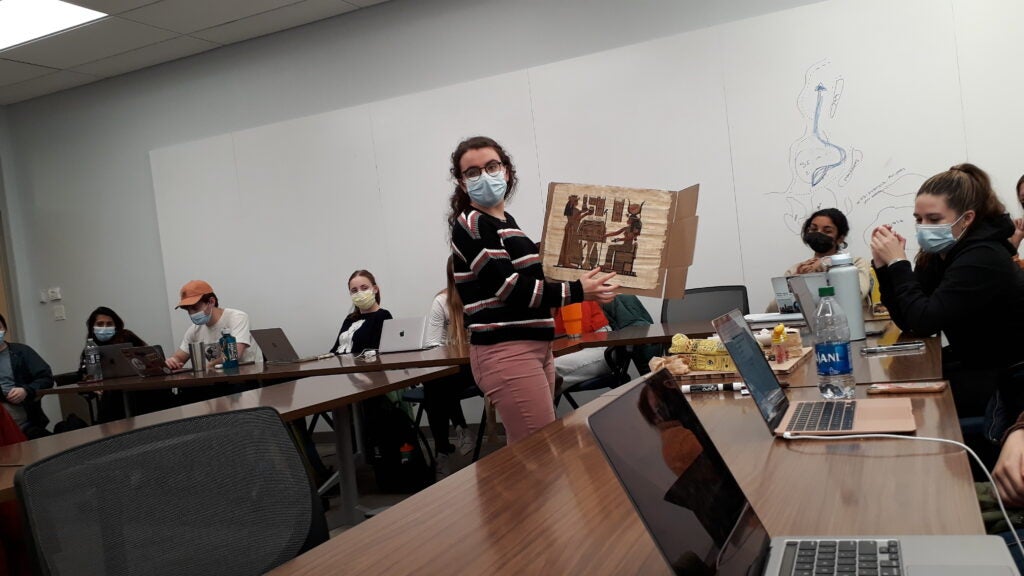
The usage of plant-based materials in the mummification process in the New Kingdom of Egypt 15
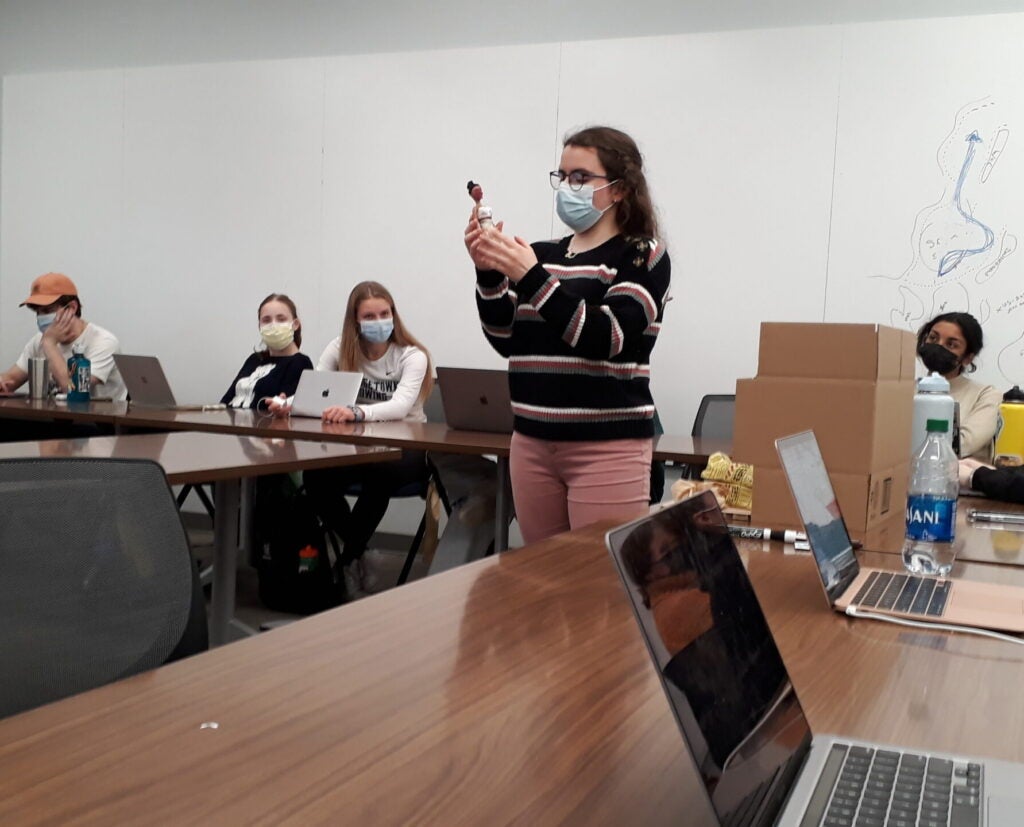
The usage of plant-based materials in the mummification process in the New Kingdom of Egypt 14

The usage of plant-based materials in the mummification process in the New Kingdom of Egypt 13
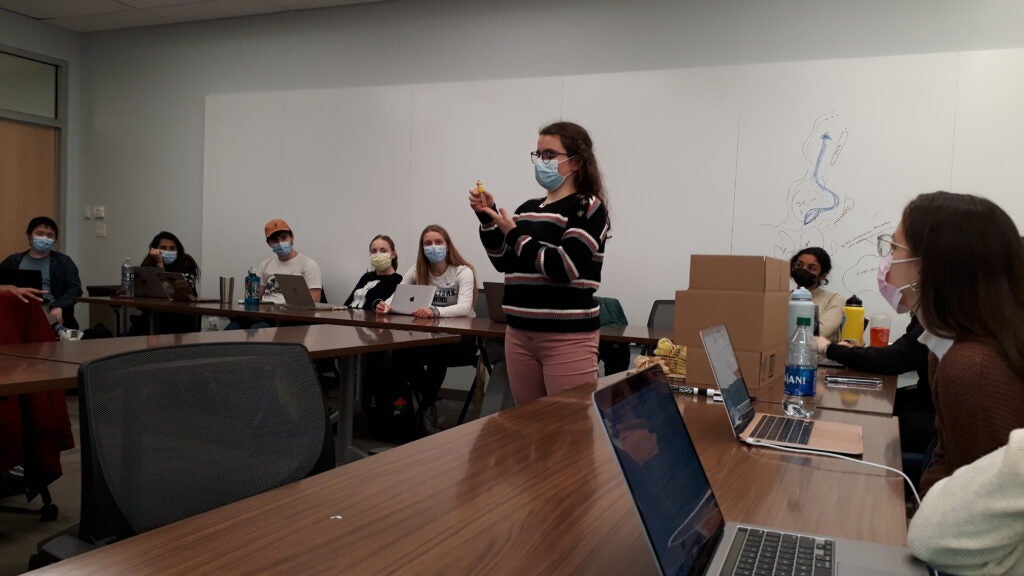
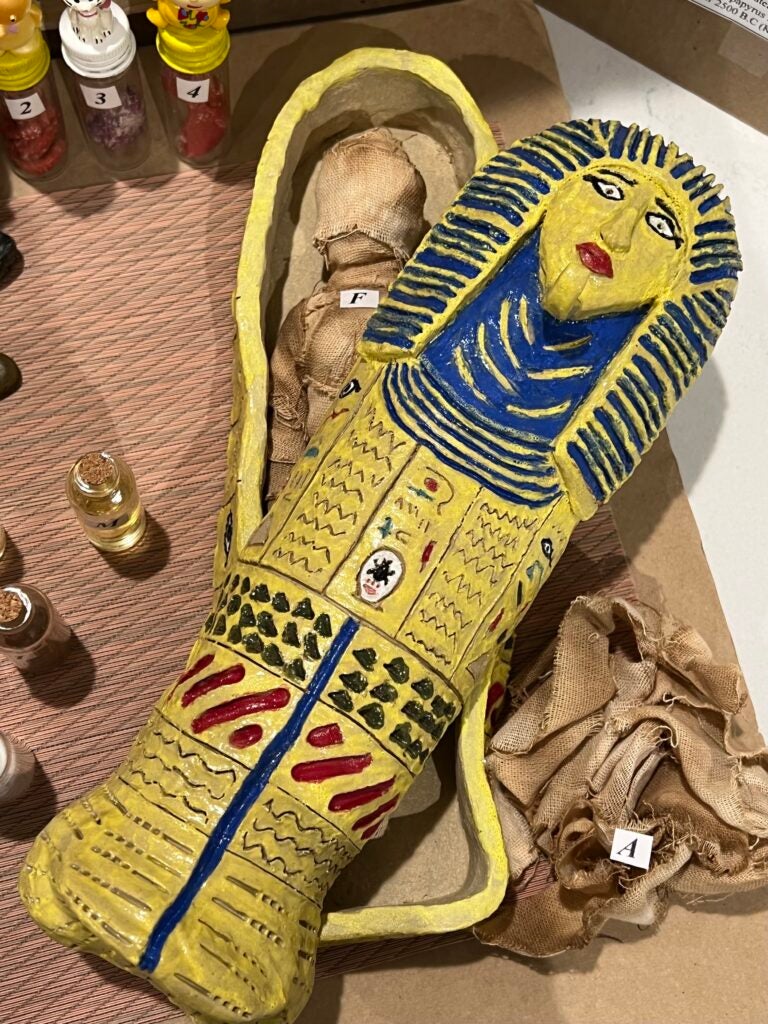
The usage of plant-based materials in the mummification process in the New Kingdom of Egypt 1
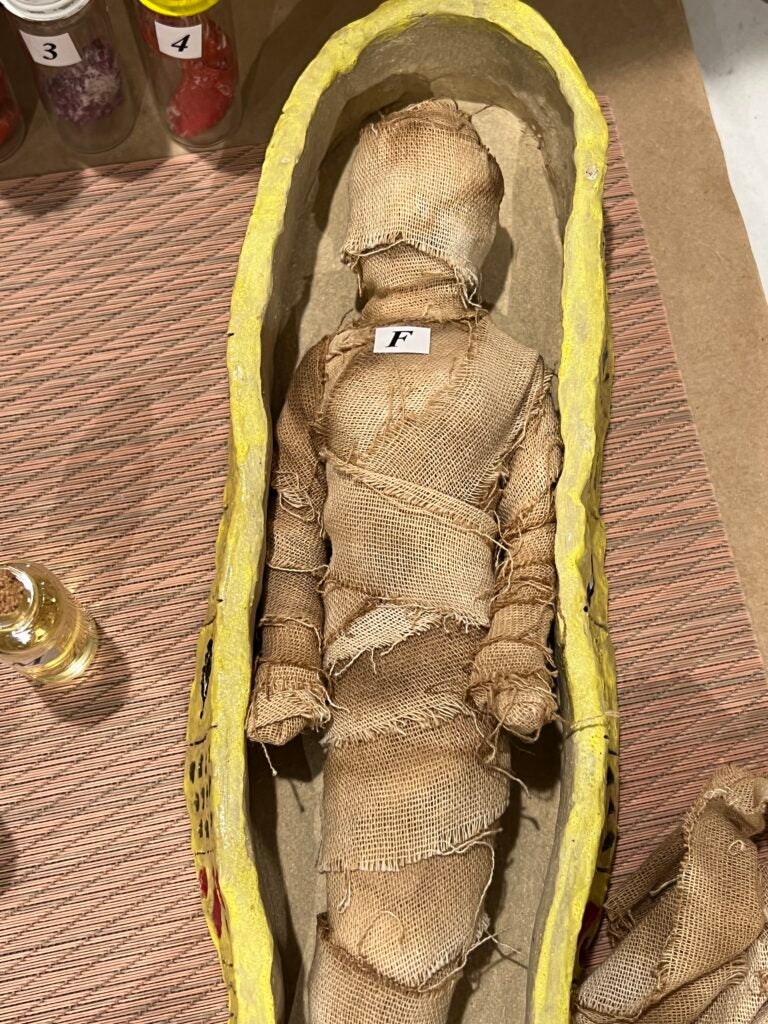
The usage of plant-based materials in the mummification process in the New Kingdom of Egypt 2
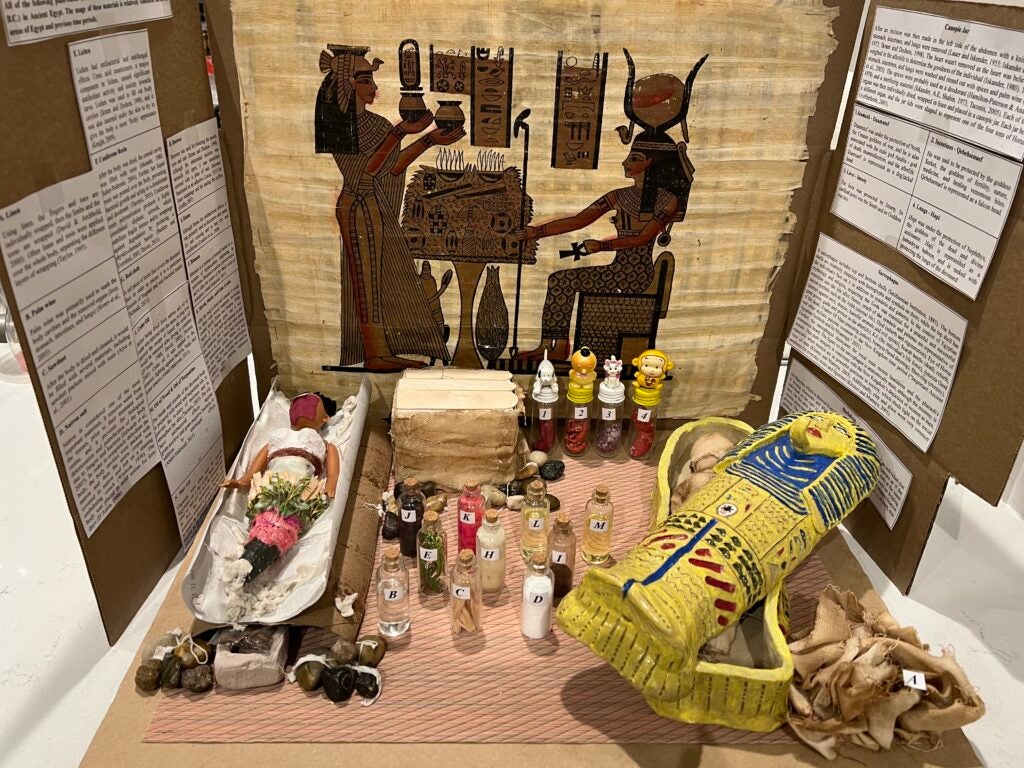
The usage of plant-based materials in the mummification process in the New Kingdom of Egypt 3
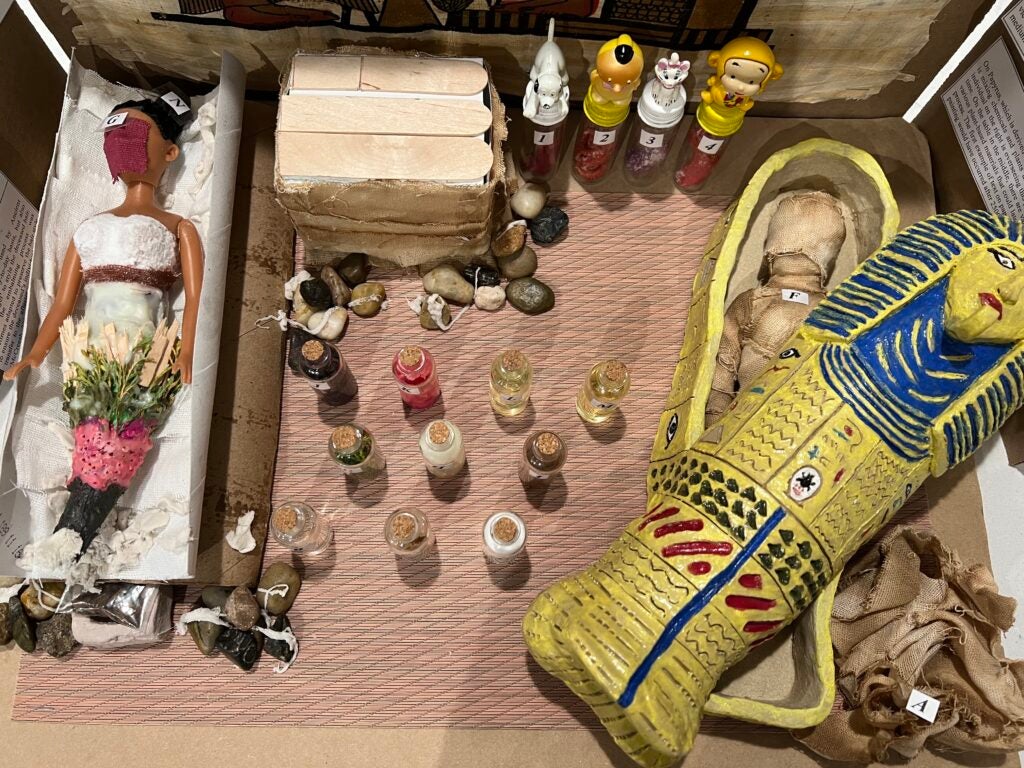
The usage of plant-based materials in the mummification process in the New Kingdom of Egypt 4
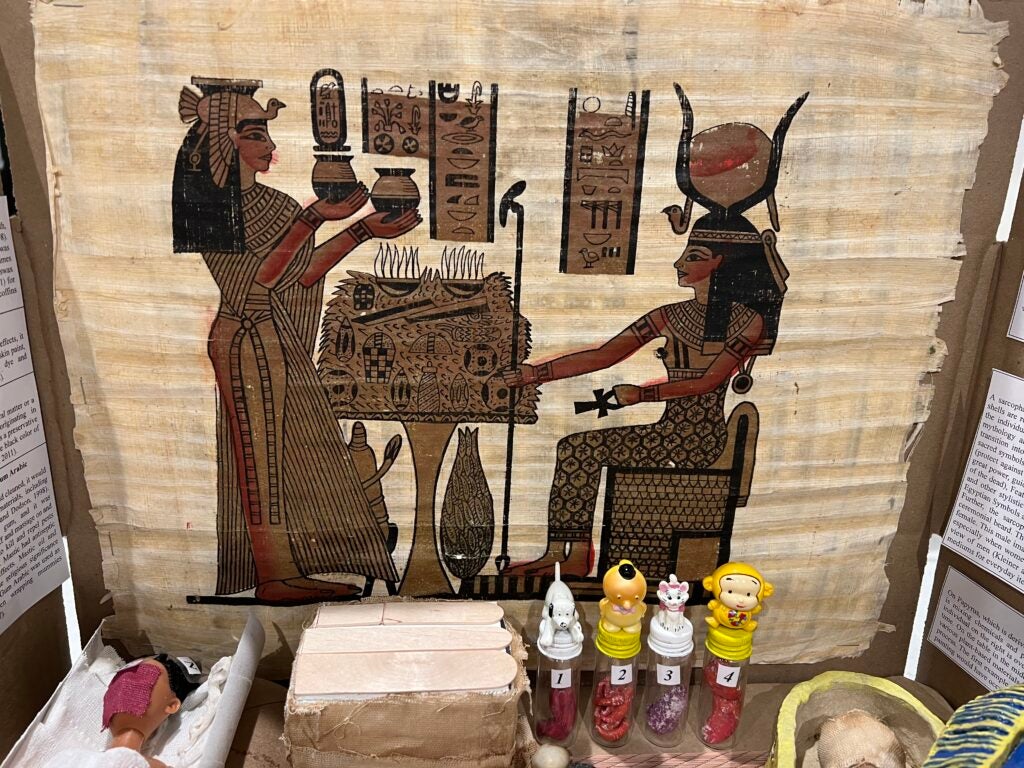
The usage of plant-based materials in the mummification process in the New Kingdom of Egypt 5
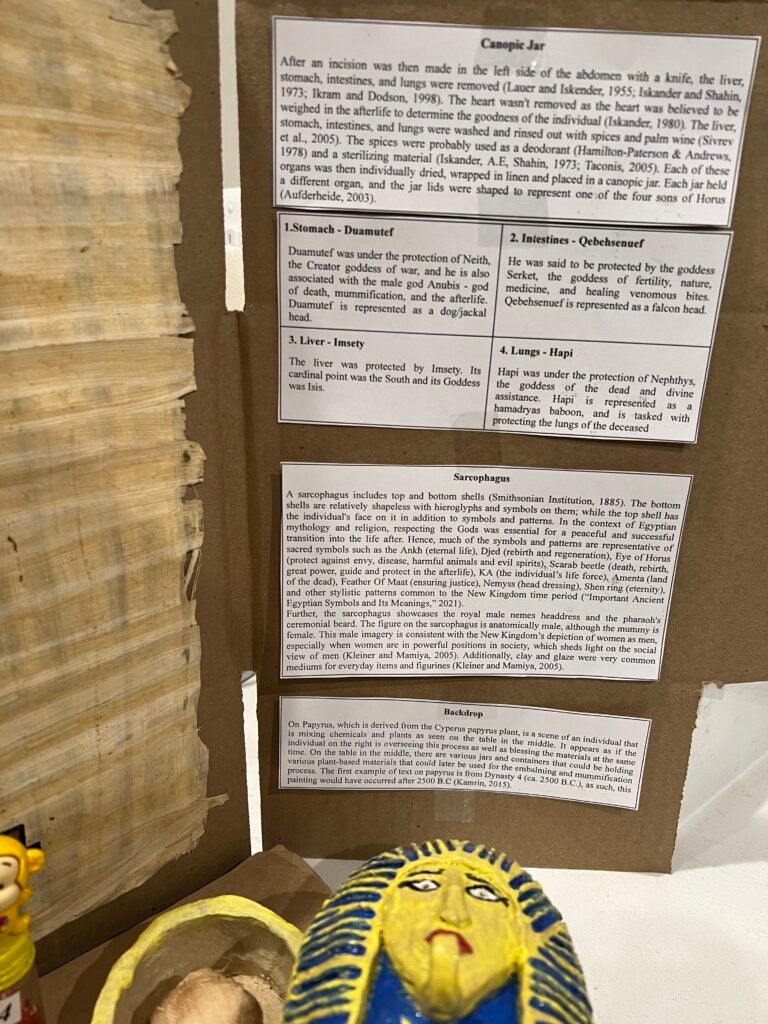
The usage of plant-based materials in the mummification process in the New Kingdom of Egypt 6

The usage of plant-based materials in the mummification process in the New Kingdom of Egypt 7
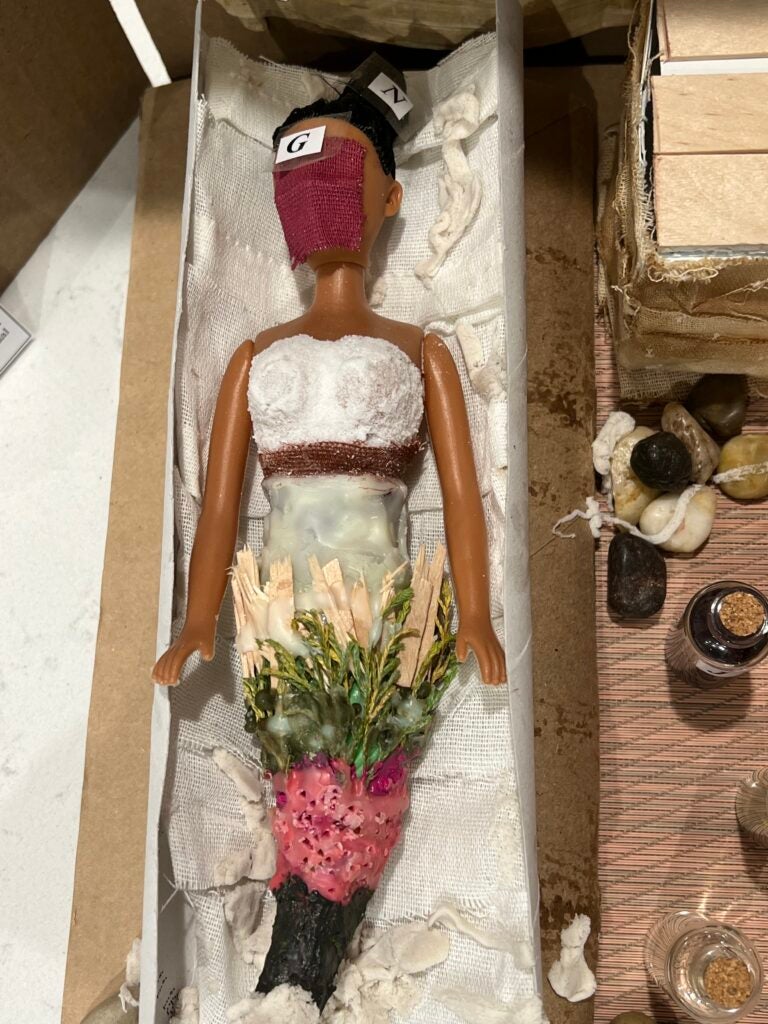
The usage of plant-based materials in the mummification process in the New Kingdom of Egypt 8
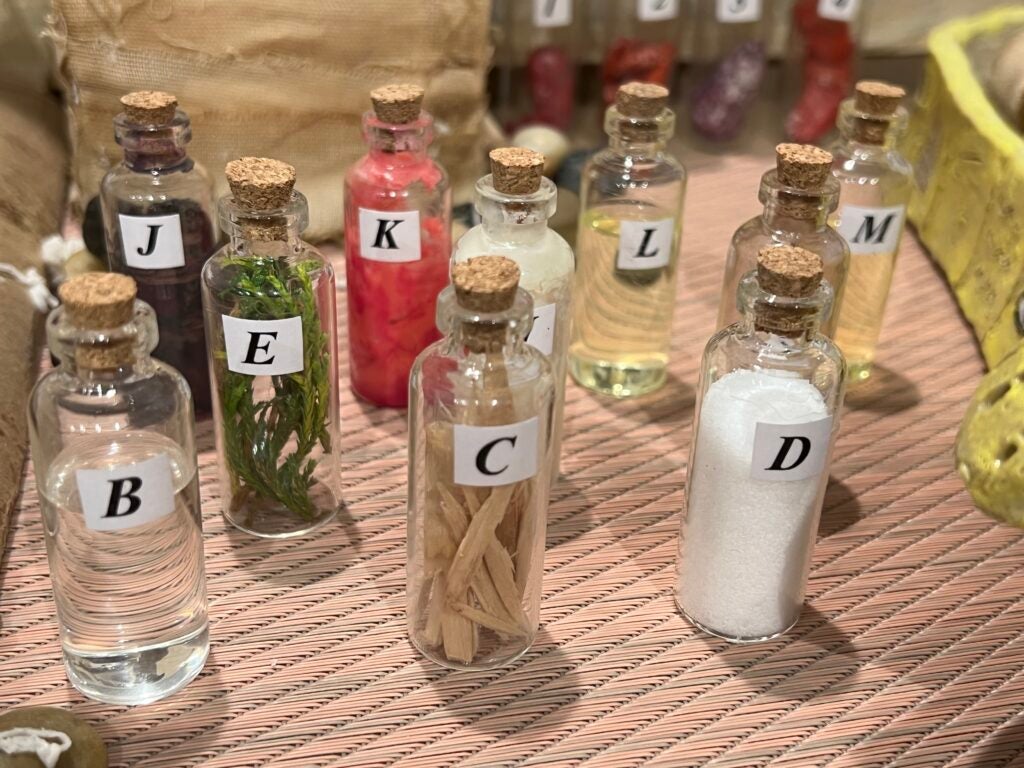
The usage of plant-based materials in the mummification process in the New Kingdom of Egypt 9
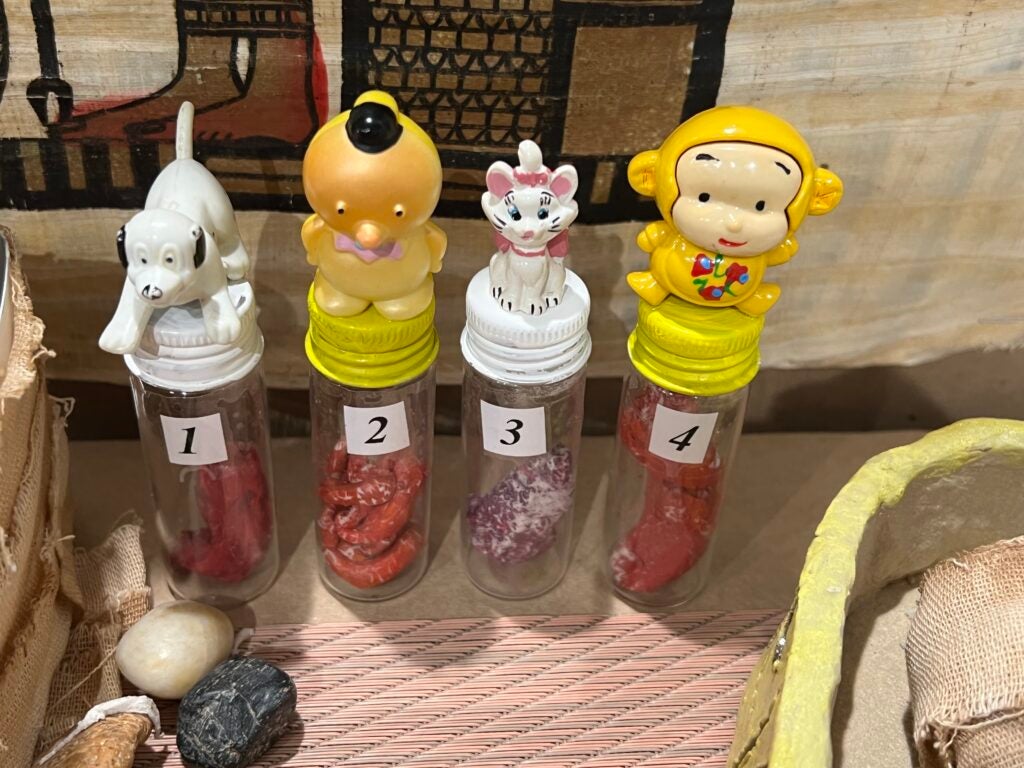
The usage of plant-based materials in the mummification process in the New Kingdom of Egypt 10
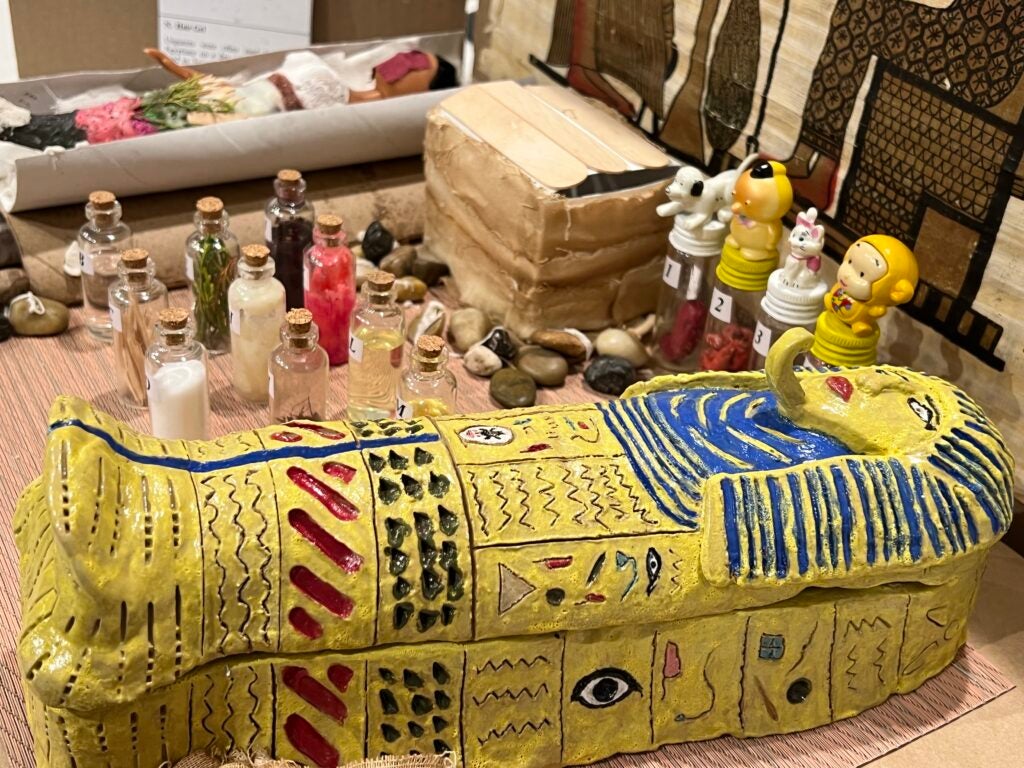
The usage of plant-based materials in the mummification process in the New Kingdom of Egypt 11
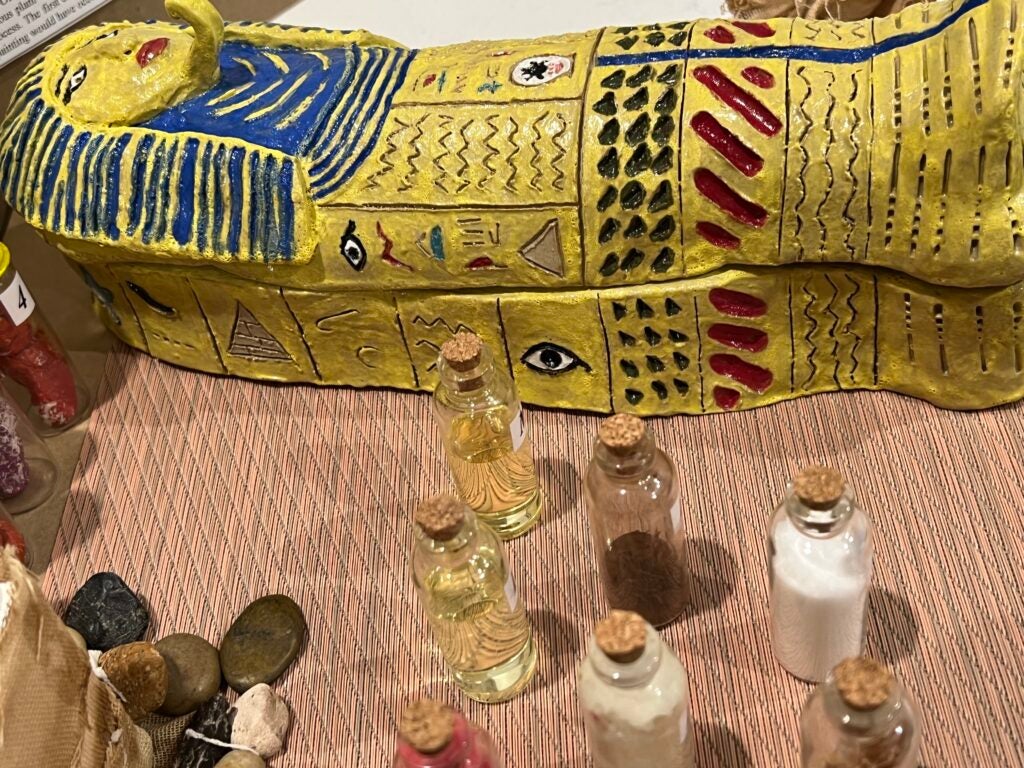
The usage of plant-based materials in the mummification process in the New Kingdom of Egypt 12
